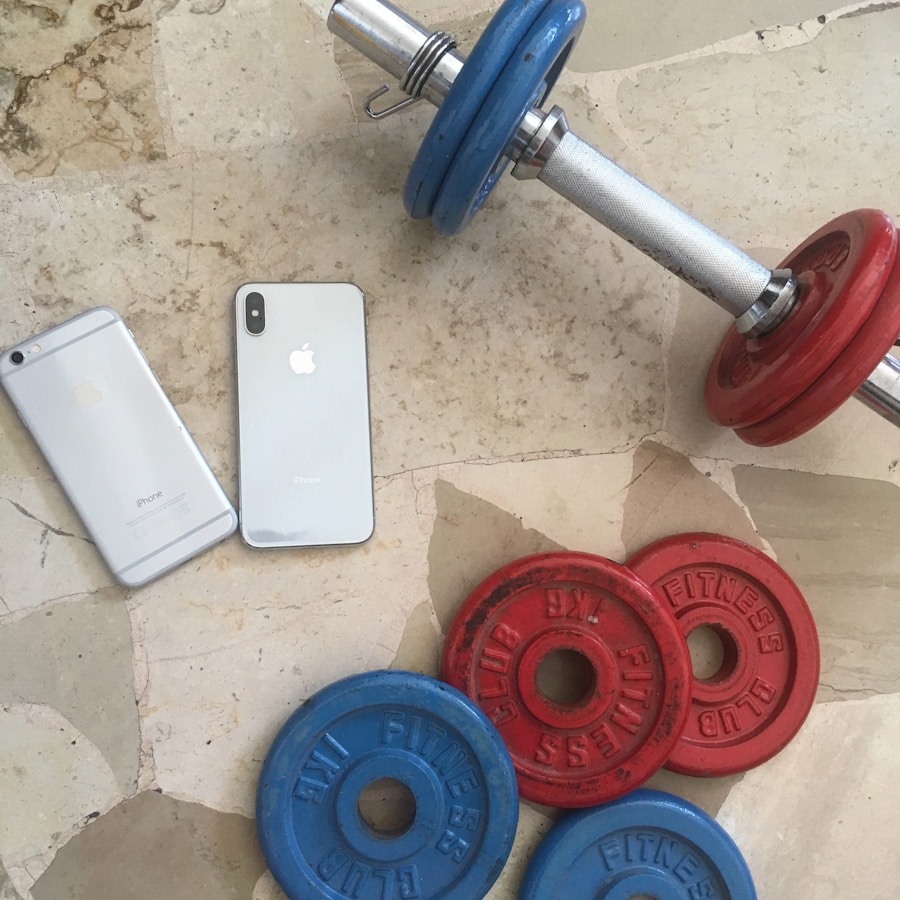
In a world where fitness trends come and go, the significance of personalized fitness cannot be overstated. You may have noticed that what works for one person may not yield the same results for you. This is because each individual has unique physical attributes, fitness levels, and personal goals.
Personalized fitness takes into account your specific needs, preferences, and lifestyle, allowing you to embark on a journey that is not only effective but also enjoyable. By tailoring your fitness regimen to suit your individual characteristics, you can maximize your results and maintain motivation over the long term. Moreover, personalized fitness fosters a deeper connection between you and your workout routine.
When you engage in exercises that resonate with your interests and capabilities, you are more likely to stick with them. This connection can lead to a more fulfilling experience, as you see tangible progress that aligns with your personal aspirations. Whether you aim to lose weight, build muscle, or enhance your overall well-being, a customized approach ensures that you are not just going through the motions but actively participating in a journey that is uniquely yours. Check out the latest hair treatments at hair.
Key Takeaways
- Personalized fitness is important because it takes into account individual needs, goals, and limitations.
- Creating a custom workout plan involves assessing your current fitness level, setting specific goals, and choosing exercises that align with your objectives.
- Understanding your body and its needs is crucial for designing an effective workout routine that promotes strength, flexibility, and overall well-being.
- Tailoring your exercise routine to your goals means adjusting the intensity, frequency, and type of workouts to achieve specific outcomes, such as weight loss, muscle gain, or improved endurance.
- Nutrition plays a key role in personalized fitness by providing the fuel and nutrients necessary for optimal performance and recovery.
How to Create a Custom Workout Plan
Creating a custom workout plan begins with self-assessment.
Consider what activities you enjoy and what types of exercises make you feel energized rather than drained.
This initial step is crucial because it sets the foundation for a plan that you will be excited to follow. You might find it helpful to jot down your thoughts or even discuss them with a friend or fitness professional who can provide insights and encouragement. Once you have a clear understanding of your starting point and aspirations, it’s time to structure your workout plan.
A well-rounded program typically includes cardiovascular exercises, strength training, flexibility work, and rest days. You should aim for a balance that suits your lifestyle while challenging your body appropriately. For instance, if you love running but want to build strength, consider incorporating bodyweight exercises or resistance training into your routine.
The key is to create a plan that feels manageable yet pushes you toward your goals.
Understanding Your Body and Its Needs

To truly personalize your fitness journey, it’s essential to understand your body and its unique needs. Each person has different strengths, weaknesses, and potential limitations based on factors such as age, genetics, and previous injuries. By taking the time to learn about your body’s capabilities, you can make informed decisions about the types of exercises that will benefit you most.
This understanding can also help you avoid injuries and setbacks that may arise from pushing yourself too hard or engaging in activities that are not suitable for your current condition. Listening to your body is another critical aspect of this process. You may notice that certain exercises leave you feeling invigorated while others may cause discomfort or fatigue.
Pay attention to these signals; they are your body’s way of communicating its needs. If you find that a particular movement causes pain or discomfort, it may be time to modify it or seek alternatives that provide similar benefits without the strain. By respecting your body’s signals and adjusting accordingly, you can create a sustainable fitness routine that promotes long-term health and well-being.
For more information on understanding your body’s needs and creating a personalized fitness routine, you can visit this link: Understanding Your Body
Tailoring Your Exercise Routine to Your Goals
| Exercise Goal | Recommended Exercise Routine |
|---|---|
| Weight Loss | Cardio exercises like running, cycling, or swimming for at least 30 minutes, 5 times a week |
| Muscle Building | Strength training with weights or resistance bands, focusing on major muscle groups, 3-4 times a week |
| Flexibility | Yoga or Pilates sessions for 60 minutes, 2-3 times a week |
| Endurance | High-intensity interval training (HIIT) workouts, alternating between intense bursts of activity and short recovery periods, 3 times a week |
Your fitness goals are the driving force behind your personalized workout plan. Whether you want to lose weight, gain muscle, improve endurance, or enhance flexibility, tailoring your exercise routine to these objectives is vital for success. Start by setting specific, measurable goals that will guide your efforts.
For example, instead of simply aiming to “get fit,” consider setting a goal like “run a 5K in under 30 minutes” or “increase my squat weight by 20 pounds in three months.” These concrete targets will help you stay focused and motivated. Once you have established your goals, it’s time to select exercises that align with them. If weight loss is your primary objective, incorporating high-intensity interval training (HIIT) and cardiovascular workouts can be beneficial.
On the other hand, if muscle gain is your focus, strength training should take precedence in your routine. Additionally, don’t forget to include recovery days in your schedule; rest is just as important as the workouts themselves in achieving your goals.
The Role of Nutrition in Personalized Fitness
Nutrition plays an integral role in any personalized fitness plan. You may have heard the saying, “You can’t out-exercise a bad diet,” and there’s truth to that statement. To fuel your body effectively for workouts and recovery, it’s essential to pay attention to what you eat.
A balanced diet rich in whole foods—such as fruits, vegetables, lean proteins, whole grains, and healthy fats—will provide the nutrients necessary for optimal performance and recovery. Moreover, understanding how nutrition affects your energy levels and recovery can help you make informed choices about what to eat before and after workouts. For instance, consuming carbohydrates before exercising can provide the energy needed for an intense session, while protein afterward aids in muscle repair and growth.
You might also consider consulting with a nutritionist or dietitian who can help tailor a meal plan that complements your fitness goals and lifestyle.
Working with a Personal Trainer or Fitness Coach

Expert Guidance for a Tailored Plan
If you’re feeling overwhelmed by the prospect of creating a personalized fitness plan on your own, working with a personal trainer or fitness coach can be an excellent option. These professionals bring expertise and experience to the table, helping you navigate the complexities of exercise selection, form correction, and program design. A trainer can assess your current fitness level and work with you to develop a tailored plan that aligns with your goals while ensuring safety and effectiveness.
Accountability and Motivation
Additionally, having a personal trainer provides accountability and motivation. Knowing that someone is invested in your progress can encourage you to push through challenging workouts and stay committed to your routine. Trainers can also offer valuable feedback on your technique and progress, helping you make necessary adjustments along the way.
Unlock Your Full Potential
Whether you’re new to fitness or looking to take your training to the next level, enlisting the help of a professional can be a game-changer.
Tracking Progress and Making Adjustments
Tracking your progress is an essential component of personalized fitness. By keeping a record of your workouts, measurements, and achievements, you can gain insights into what is working well and what may need adjustment. This practice not only helps you stay motivated but also allows you to celebrate milestones along the way—whether it’s lifting heavier weights or completing more repetitions than before.
As you track your progress, be open to making adjustments as needed.
Regularly reassessing your goals and workout plan ensures that you continue to challenge yourself appropriately while avoiding plateaus.
Remember that fitness is not a one-size-fits-all journey; it requires flexibility and willingness to adapt as you evolve.
Finding Motivation and Accountability in Personalized Fitness
Staying motivated on your personalized fitness journey can sometimes be challenging. Life’s demands can easily sidetrack even the most dedicated individuals. To combat this, consider finding sources of motivation that resonate with you personally—whether it’s setting new challenges for yourself, joining group classes with like-minded individuals, or following inspiring fitness influencers on social media.
Accountability is another crucial factor in maintaining motivation. Sharing your goals with friends or family members can create a support system that encourages you to stay on track. Alternatively, consider partnering with a workout buddy who shares similar aspirations; having someone else invested in your journey can make workouts more enjoyable and keep you accountable on days when motivation wanes.
Ultimately, finding what inspires you personally will help ensure that your commitment to personalized fitness remains strong over time. In conclusion, personalized fitness is not just about following trends; it’s about creating a unique path tailored specifically for you. By understanding your body’s needs, setting clear goals, focusing on nutrition, seeking professional guidance when necessary, tracking progress diligently, and finding motivation through accountability, you can embark on a fulfilling fitness journey that leads to lasting results and improved well-being.
Embrace this opportunity for self-discovery and growth as you work toward becoming the best version of yourself through personalized fitness.
If you’re looking to enhance your fitness routine with the best portable cardio equipment, be sure to check out this article for some great recommendations. In addition to a custom workout plan, incorporating the right supplements can also help boost your immunity. Learn more about the best supplements for immunity in this article. And for those interested in tracking their mental health along with their physical health, explore this article on the best wellness gadgets for mental health tracking.


